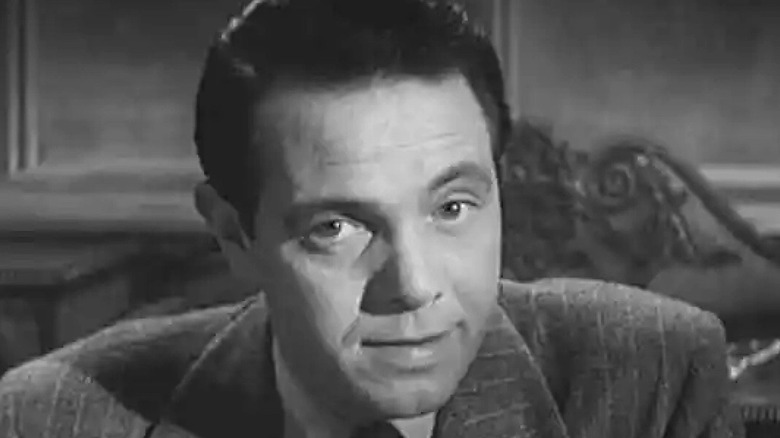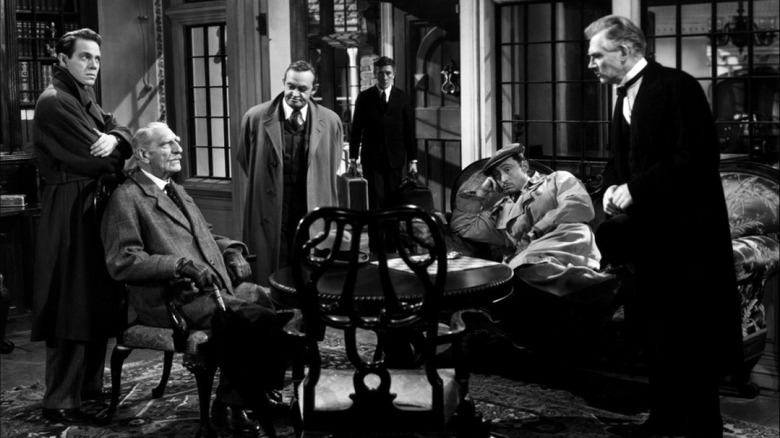The Horror Movie That Laid The Foundation For Slasher Films
The horror genre has developed seemingly dozens of sub-genres, spin-offs, and off-shoots over the decades. At the end of the day, though, when horror movie lovers really want to get down with a few classic jump scares and a bit of arterial spray, the slasher genre is pretty much ground zero.
Over the decades, slasher flicks have birthed some of the most iconic villains, imagery, and plot twists the horror realm has ever seen. In turn, slashers have also delivered many of horror's most beloved movies, in the likes of "Psycho," "Blood and Black Lace," "Halloween," "Friday the 13th," and "Black Christmas," to name just a few.
As it is, those movies all get regular mentions when genre gurus discuss the early days of slasher fiction. And each is, indeed, worthy of mention, as they all did their part in both changing the nature of the slasher game, and bringing that game to public consciousness in viscerally shocking fashion. However, as far as the birth of the genre goes, these films arguably owe a debt of gratitude to a legendary — if oft-overlooked — whodunnit from 1945.
And Then There Were None is a classic whodunnit with a slashery touches
Hopefully you've at least heard of "And Then There Were None," because it's not only a bona-fide precursor to slasher cinema as we've come to know it (as explained by Classic Film Haven), it's also a first-rate whodunnit straight from the pen of Agatha Christie. And even if you haven't seen "And Then There Were None," the name Agatha Christie should mean something to you as the legendary author is a legit master of the murder mystery genre.
Christie's 1939 novel, "And Then There Were None," is considered by many readers to be her strongest ever work of mystery fiction. It also happens to be one of her most adapted stories, having served as inspiration for numerous films and stage plays. As for the 1945 adaption, it was the story's first big screen presentation, and didn't stray too far from Christie's source material. Set almost entirely inside a sprawling manor on an isolated island, the film finds a group of strangers desperately trying to survive the weekend as an unknown killer picks them off one by one.
While the film boasts little of the blood and gore we've come to expect in a slasher film these days, that whole "strangers getting murdered in an isolated location" motif has obviously been repeated over and over in dozens (if not hundreds) of slasher movies over the years. So, too, have many of director René Clair's tension-building techniques — with light, shadow, and the prospect of horrors unseen bolstering Christie's classic whodunnit setup, making for a bone-chilling treat that played with slasher conventions long before those were a thing.

